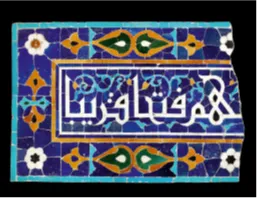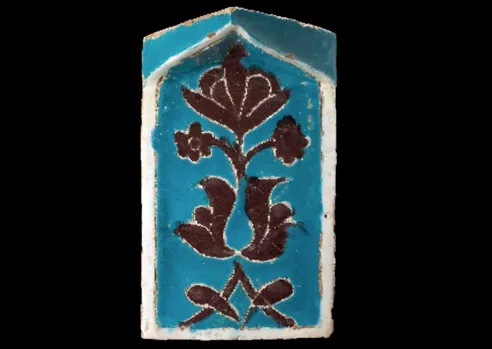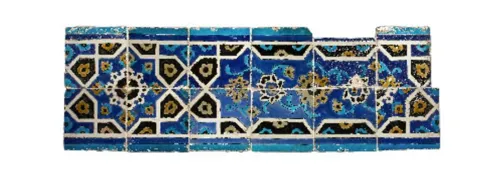The art of architectural tilework from the era of Amir Timur represents one of the brightest chapters in the history of Uzbek culture. These masterpieces, created in Samarkand, Shahrisabz, and Bukhara during the 14th–15th centuries, not only adorned mosques, mausoleums, and madrasahs but also became symbols of the grandeur of the Timurid era.

15th century, Timurid era
Printed with permission from Fondazione Torino Musei
Today, unique examples of Timurid tiles can be seen in Italian museums, where they evoke admiration and awe among art connoisseurs. The glazed tiles, covered in vibrant shades of turquoise, cobalt, and white, captivate viewers with their exquisite craftsmanship and delicate ornamentation. Geometric patterns, calligraphic inscriptions, and stylized floral motifs reflect the profound philosophy of beauty and harmony characteristic of the architecture of Maverannahr (Transoxiana).
The masters of Samarkand and Shahrisabz employed sophisticated techniques: double-glazed firing, the mushabbak technique (lattice tilework), and inlaid carved terracotta. These methods allowed them to create unique façades that shimmered in the sunlight like precious gems.
The appearance of Timurid tiles in Italy is linked to the Renaissance era, when European collectors began to gather works of Eastern art, admiring their perfection.
Today, each fragment of these tiles is not only a work of art but also a living testament to the great culture of the Uzbek Renaissance.


The material is based on the book "Cultural Legacy of Uzbekistan in the Collections of Italy" (Volume 32, series "Cultural Legacy of Uzbekistan in the World Collections"). The book was published within the framework of the international project World Society for the Study, Preservation, and Popularization of the Cultural Legacy of Uzbekistan (WOSCU). The book is available in libraries, museums, and on the official website of the project: www.woscu.org .
WOSCU Press Service
